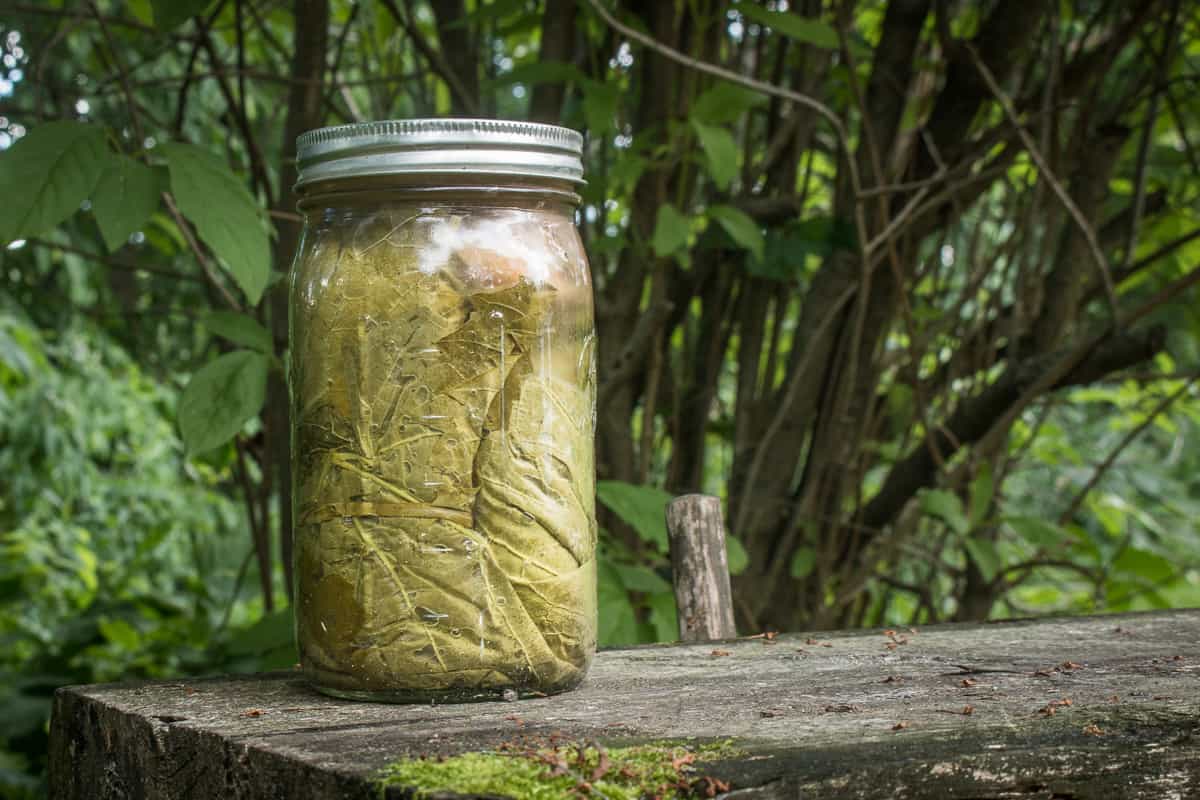Fermented Grape Leaves
5.0
(11)
Your folders
Your folders
Prep Time: 30 minutes
Author : Alan Bergo

Ingredients
Export 1 ingredients for grocery delivery
Instructions
Step 1
When harvesting the grape leaves, be mindful to remove them at the stem so all you have is leaf. Choose clean grape leaves without any foreign matter on them (bird poo, insect eggs, spider webs, etc).
Step 2
Make a stack of grape leaves in your palm until it gets large, then fold them firmly into a roll or packet and stuff them into a quart jar.
Step 3
Repeat this process, stuffing the jar full until you nearly reach the top. Put a clean stone on top to hold the leaves in place, then cover completely with water.
Step 4
Pour out the water, mix with the salt to dissolve, then pour back in the jar. (You can also just pour the salt into the jar and shake it, but it takes longer to dissolve.)
Step 5
For a more exact ferment using a scale, see note below.
Step 6
Put the jar(s) on a cookie sheet or other small tray to catch any brine that may migrate out.
Step 7
Open the jar occasionally to allow carbon dioxide to escape.
Step 8
Ferment the leaves for 1-2 weeks, depending on your taste. Store the jars in a place out of direct sun with a stable temperature, such as a pantry.
Step 9
Finished fermented grape leaves can be stored, always underneath their liquid, in their jar at room temperature, or they can be water bath canned and stored in a pantry. You can also keep them in the refrigerator where they will last near indefinitely, and don't run the risk of developing pesky kahm yeast.
Step 10
Your home-fermented grape leaves will be less salty and tart than commercial grape leaves stored in vinegar brine. But, if you want, you can rinse them before using them to make grape leaf rolls, etc.